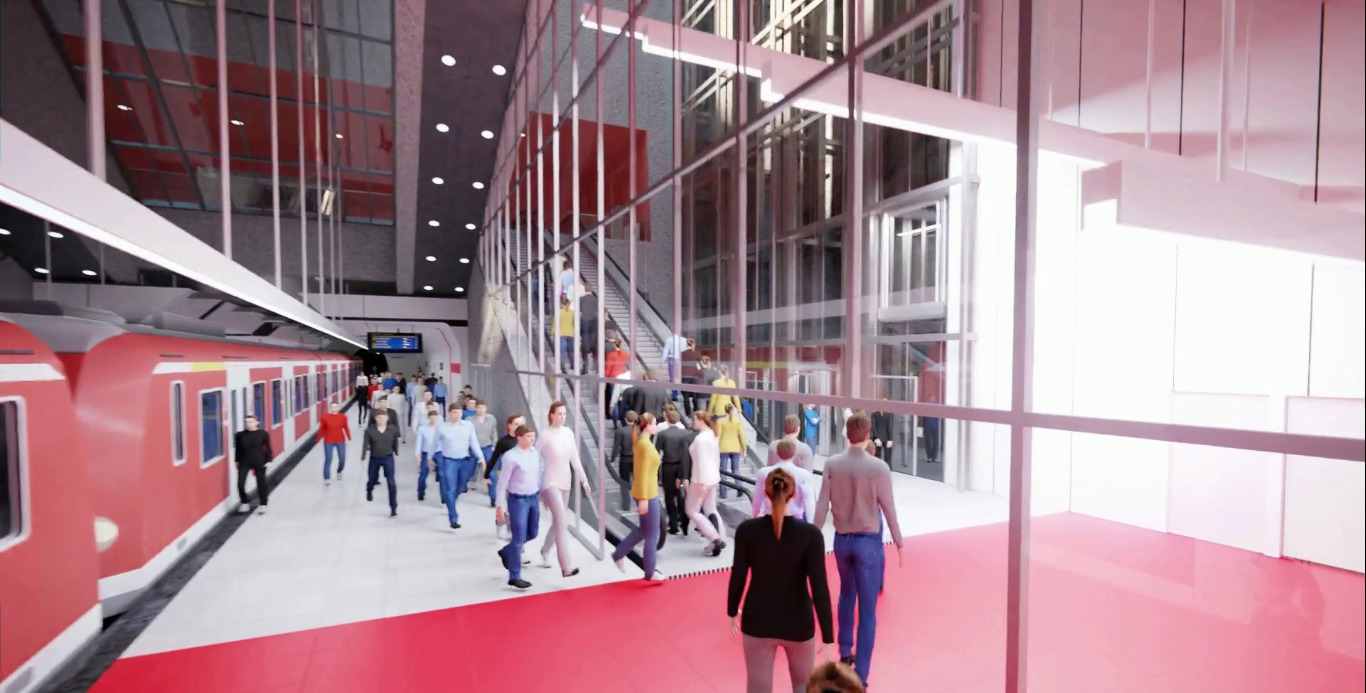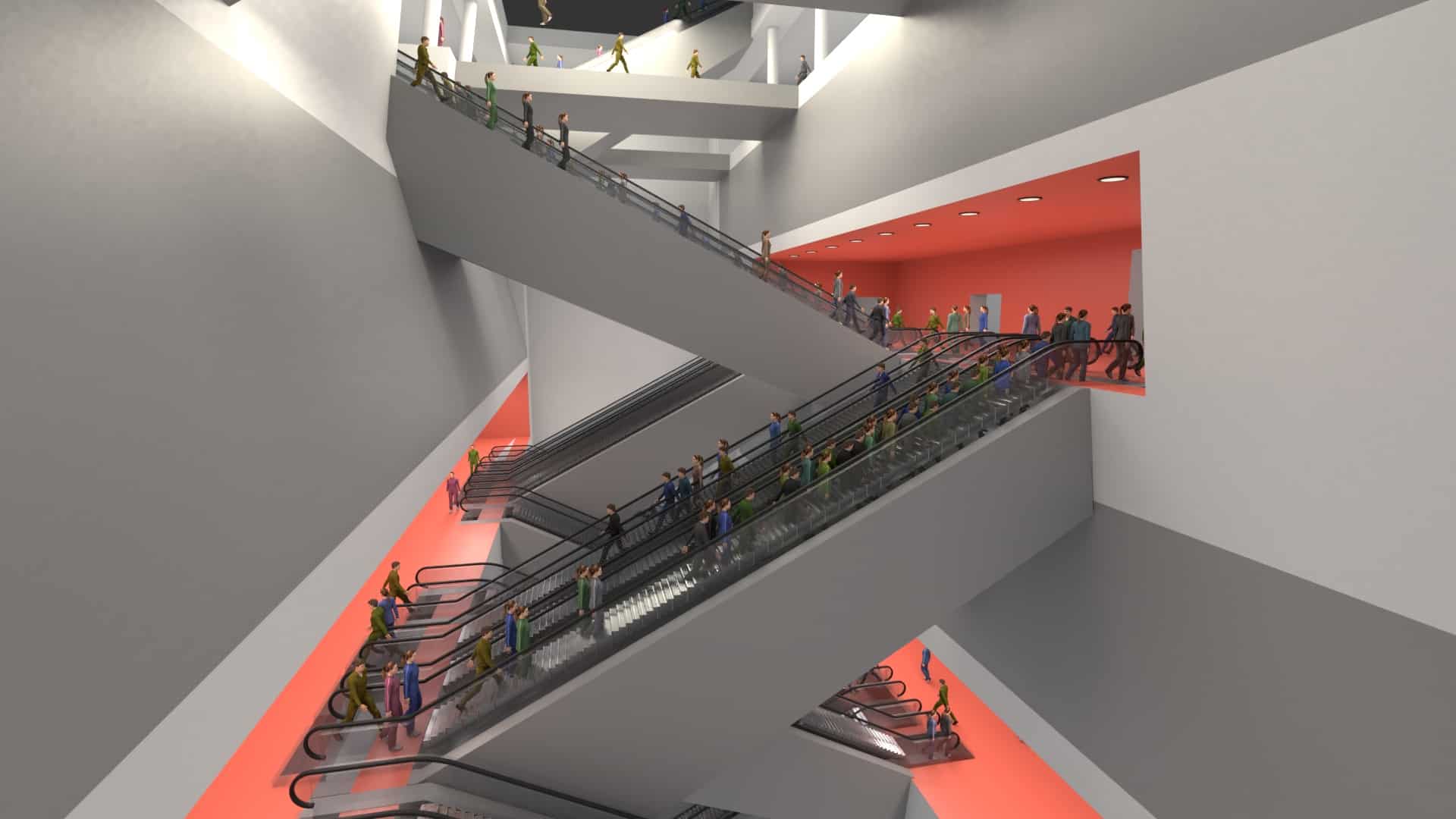Passenger flow simulation of the 2nd S-Bahn main line at Munich Central Station

Description
Client: DB Netz AG
Task: Passenger flow simulation
Result: Optimization of passenger flows in the building
Task: Passenger flow simulation
Result: Optimization of passenger flows in the building
Background
Up to 450,000 people use Munich Central Station every day. This makes it one of the busiest passenger stations in Germany and at the same time a central traffic hub in Munich's city center: the traffic flows of trains, suburban trains, subway trains, buses and streetcars converge here. In order to be able to cope with this high number of passengers in the future, local public transport must be expanded. The construction of the 2nd Munich main line will provide new, urgently needed capacity, create a bypass for the existing main line and, with just three new underground stations, ensure rapid progress through the city between Laim and Leuchtenbergring. One of the three new underground stations is being built at Munich Central Station - around 40 meters below the station building. As part of this construction work, the main station itself will also be renovated and the station building and the Starnberg wing will be rebuilt. Munich Central Station will thus become the "modern gateway to the city" State-of-the-art technologies are being used in the planning and construction of the new S-Bahn station at the central station - including Building Information Modeling (BIM). This planning method has the great advantage that all information for construction planning, as well as for cost and schedule management, can be combined, evaluated and visualized in 3D in one model. BIM therefore enables deviations to be identified and counteracted at an early stage.

"The passenger flow simulations help to optimize the planning of the stations thanks to the dynamic calculation approach. This gives us a higher level of information at an earlier stage of the project and allows us to take a better look at the interfaces." (Agustin Arizti, Head of Planning and Architecture at DB Netz AG)
Objective of the simulation
accu:rate was commissioned by DB Netz AG to simulate the passenger flows. For this purpose, the entry, exit and transfer relationships were analyzed to determine whether the planned conversions could guarantee the desired passenger comfort.
Our approach
Results
The load capacity of the main station was comprehensively tested. The combination of BIM and dynamic passenger flow simulations are state-of-the-art tools that greatly improve planning reliability.

Image sources: Copyright accu:rate
Do you have a similar project or would you like more information?
We look forward to hearing from you!